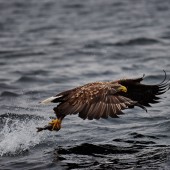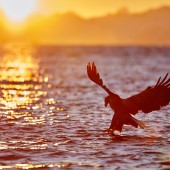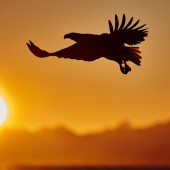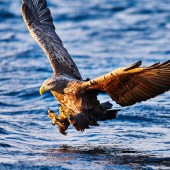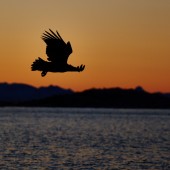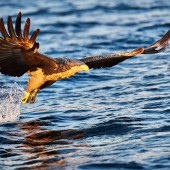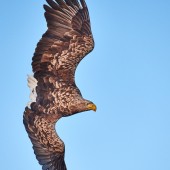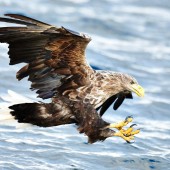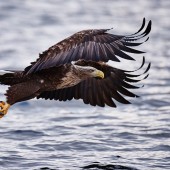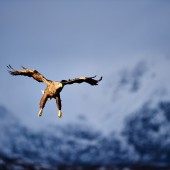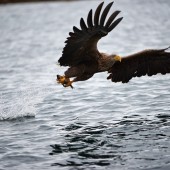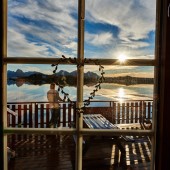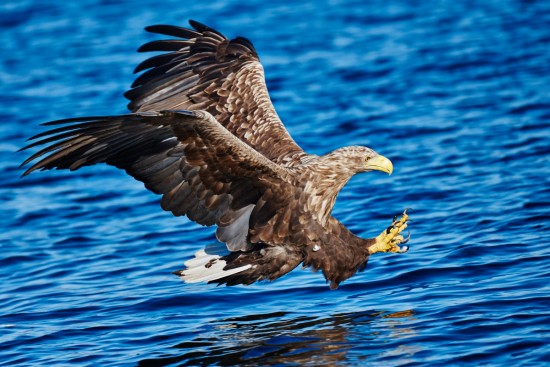
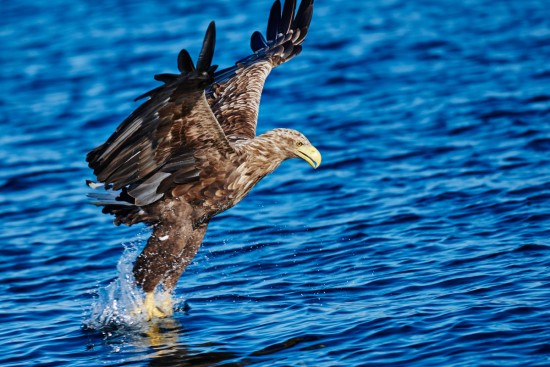
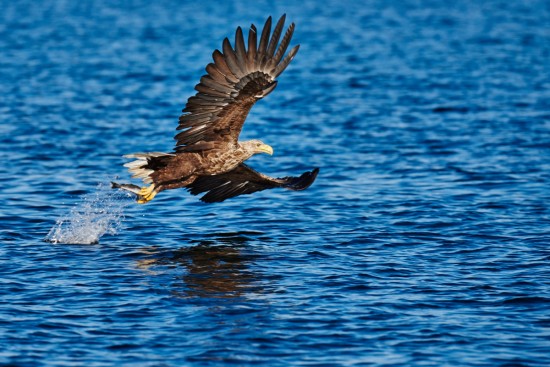
This post on white tailed eagles is by Ian Robins (website | Facebook | 500px, see also his previous guest post on living in the Arctic):
Well I saw that as a challenge. Some people ARE lucky enough to live in exotic places. My back garden is this. I run this as a holiday resort. So I suppose everyone can have it as there back garden at least for a short while. We have moose, otter, mink, and most of all white tailed eagle in our garden. What I would actually like to do is explain a little about my house pets. There will no doubt be a few facts some people will not agree with but I am no expert and do not pretend to be. I just like taking pictures of them. Around here they nest around March and April depending on the weather. Once hatched after 38 days in the egg they are fully feathered after 3-4 weeks. These pictures were taken only 20 days apart. They are adult after 4-5 years. That is when the tail is completely white. They pair for life which can be as long as 25 years.
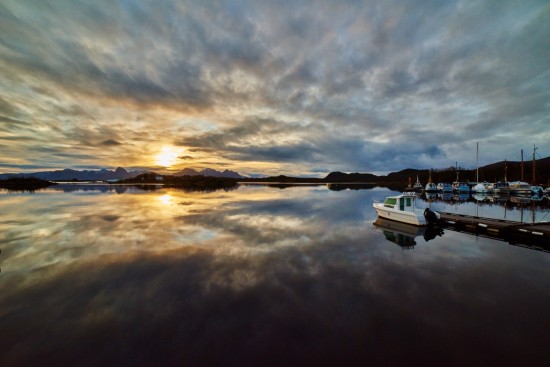
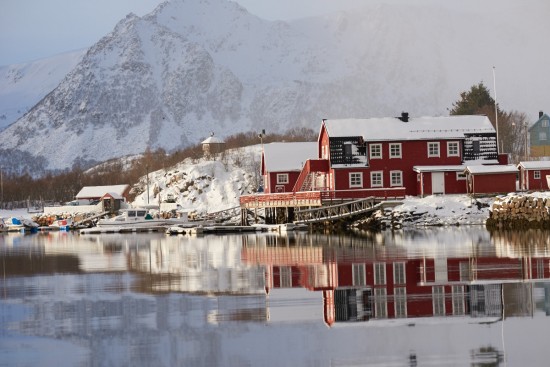
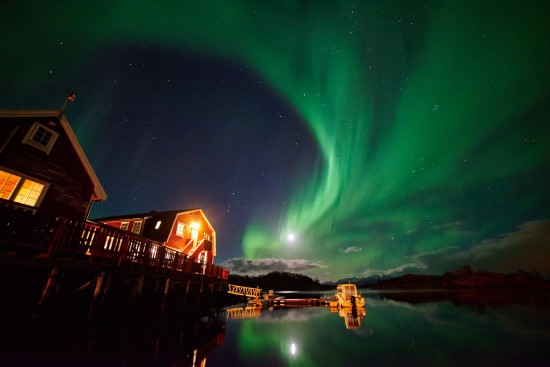
At about 20 years old they go grey just like me (more a light brown actually) but never go completely white like the bald eagle. They are the biggest raptor in Europe and the 4th biggest in the world. I am privileged to live among them. I was born in Cornwall England but spent most of life living in Germany Ruhrgebiet. The last 8 years I have been living here in Ringstad, Bø, Vesterålen, Norway. This is a nature lovers paradise as I hope these pictures will show you.
These creatures are the most rewarding thing I do here. It is always a great pleasure to here the comments and gasps of the guests when such a huge bird comes in so close to the boat.
I have numbered the first 16 images in growing age so you can see the difference in beak color (it gets more yellow with age) and how the feather change color as they get older. The last one in the sequence is a bird that is very old but also has a foot it cannot use properly. I suspect that this bird is no longer living. It had 3 attempts to get a fish I had pumped up with air. It would have great difficulty getting natural food in this condition.
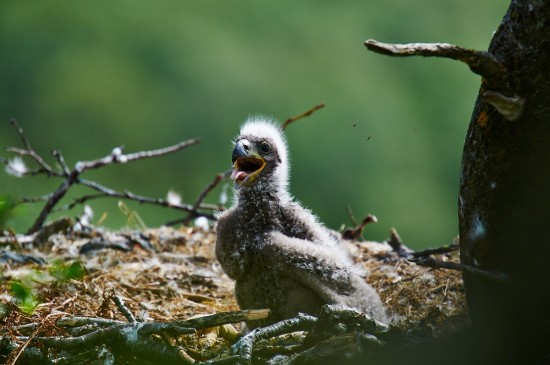
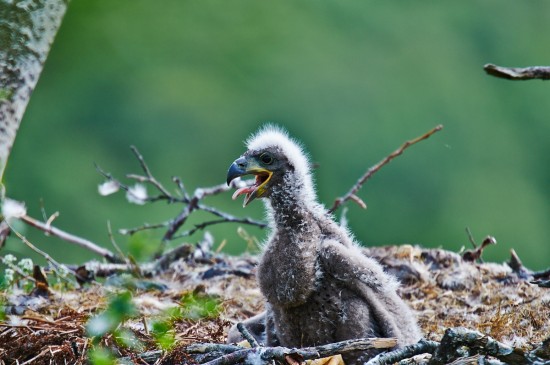
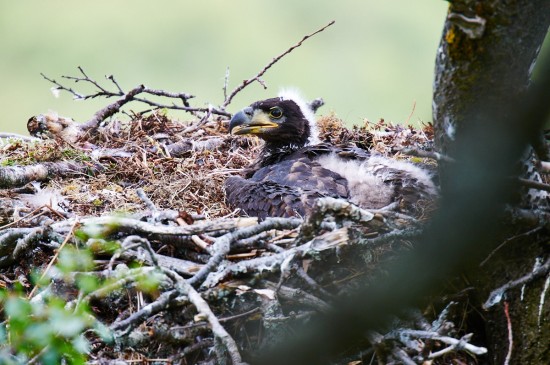
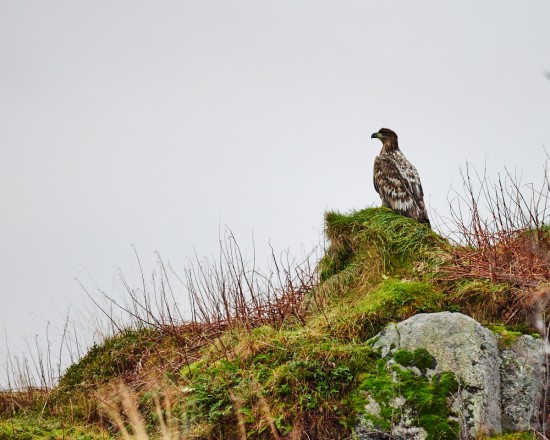
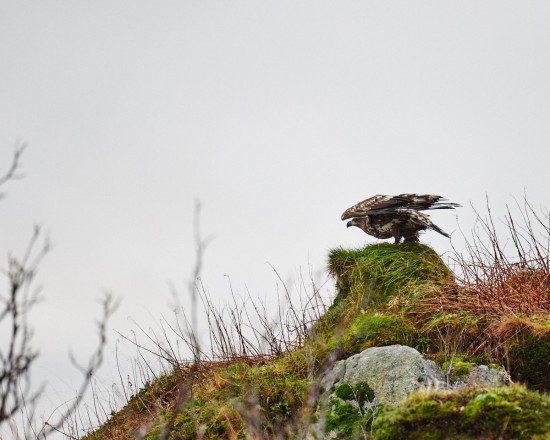
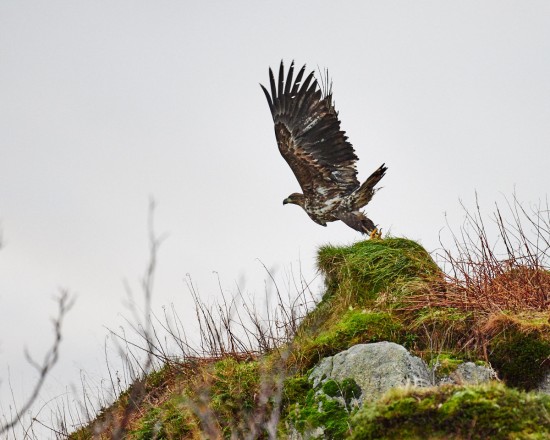
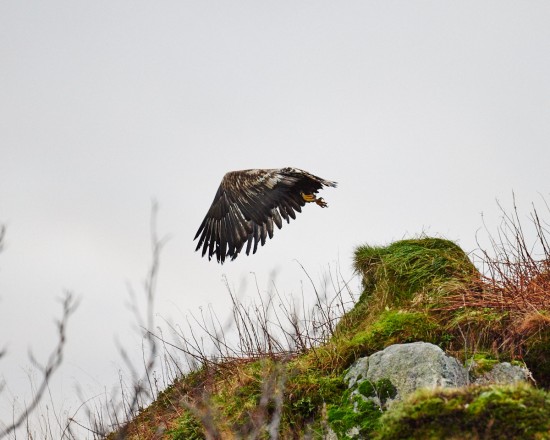
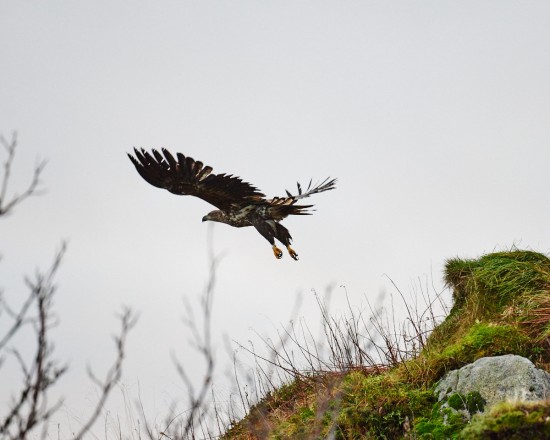
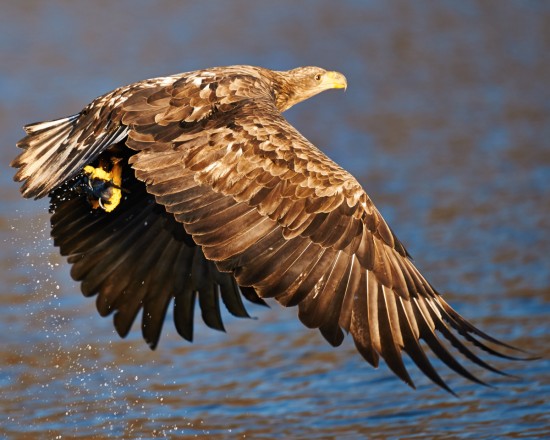
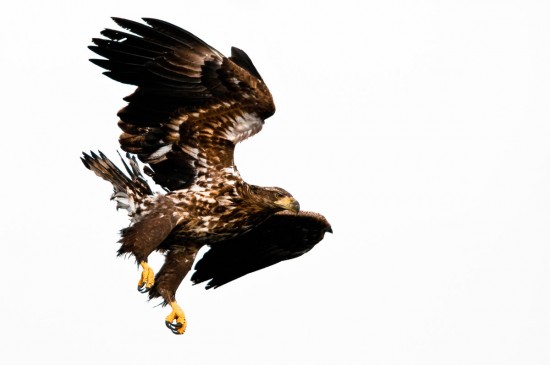
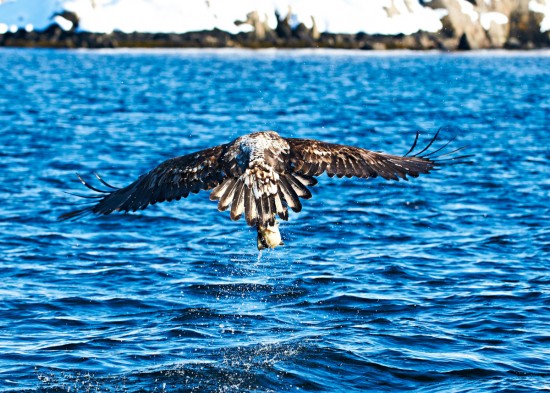
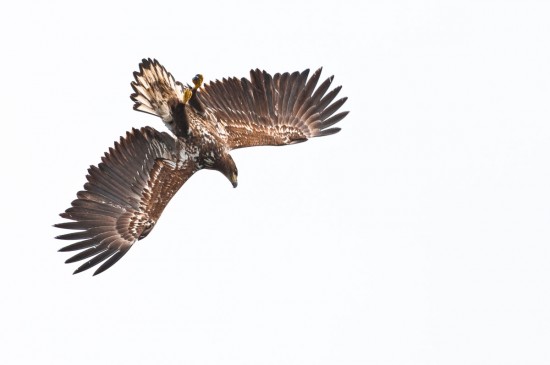
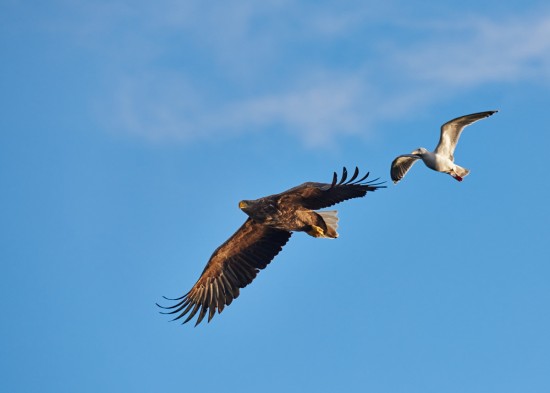
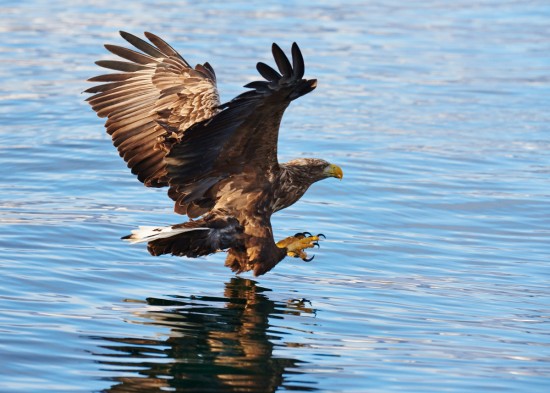

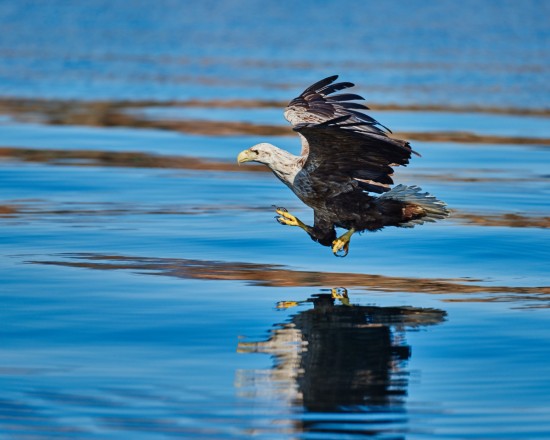
The normal procedure when I throw a fish out is that they will circle the boat and size up the situation. Test the wind direction before they do a little dance in the air. When this occurs you know they are about to come in and take the fish. They then glide down into the wind, skim the surface of the water before swinging the feet forward to sweep them down to grab the fish of course. All to fast for the naked eye but wonderful to here the wind in their feathers and the water at the moment of the grab.
I will never get bored with it as it is so spectacular. I hope you enjoy some of my moments in time with these pictures.
Best regards Ian.
If you want to experience it yourself then we welcome guests all year but the winter is best as they are s hungry.

